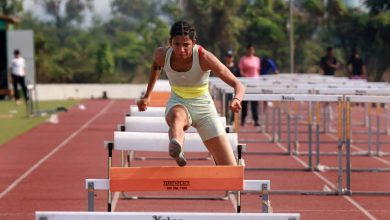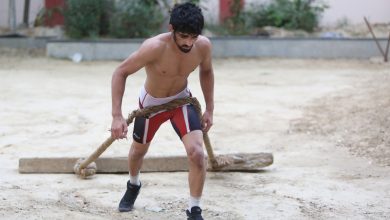Ravindra Jadeja, R Ashwin prove spin is still India’s most lethal weapon in ODIs

There is a lot to say in favour of playing to one’s strength. India might have unearthed excellent fast and fast-medium bowlers of late but their reputation, and heritage, as a great spin bowling nation cannot be wished away.
Overseas batsmen are wary when they confront India’s spinners, always expecting them to have a trick or two up their sleeve. And bowlers like off spinner Ravichandran Ashwin have further fed that belief with variations which stretch from the unconventional doosra to carom ball to floater to even the odd leg spin.
India kept out Ashwin from the playing XI in earlier Champions Trophy matches as they believed both Pakistani and Sri Lankan batsmen were adept at playing spin bowling. But when confronted with crisis in the form of a must-win game against South Africa, they swiftly reverted to the tried and tested Ashwin. And how well he responded to the call!
In fact, Ashwin and his spin twin Ravindra Jadeja made a case for spinners bowling in tandem even in ODIs. While conventional wisdom is that fast bowlers hunt in pairs, here was an excellent example of spinners too doing likewise.
Ravindra Jadeja returned with the figures of one for 43. APRavindra Jadeja returned with the figures of one for 43. AP
In fact, they were a study in contrast; not only because one was a right arm spinner and the other a left arm one, but also for the variations they brought to the bowling crease in the key match against South Africa.
Ashwin, who came in to bowl in the 10th over when powerplay regulations were still on, used line, length, angle and variations in terms of speed to keep the left-right combination of Quiton de Kock and Hashim Amla in check.
The left handed de Kock has always been a pain in the neck for Indians. He has scored a lot of runs against them — five centuries, including three back-to-back tons in one series. Yet in this crucial battle, the bowlers kept him bottled up quite efficiently. Ashwin bowled a tight line without giving him the room to cut and pull while Jadeja varied his line frequently. Jadeja often fired the ball into the left hander’s pads while bowling from over the wicket, before catching him off guard with a slower, tossed up delivery outside the line of the off stump. An eager De Kock’s eye lit up when he saw the offering as a chance to free his hands. He reached out without using his feet, played across, missed the ball and was bowled.
Earlier Ashwin had prised open the Proteas opening partnership with yet another display of intelligent bowling. He imparted spin and kept bowling middle and leg stump line. Amla had already been shackled by the opening bowlers, Bhuvaneshwar Kumar and Jasprit Bumrah and now by Ashwin. Thus when Ashwin pushed the ball faster and wide of the off stump Amla sensed an opportunity to cut the ball but succeeded in only edging it to wicket-keeper Mahendra Singh Dhoni.
What made the capture of these wickets special was that it exposed the South African batting line-up to pressure and ultimately helped India gain a choke hold over the opponents.
The South African openers had weathered the new ball bowlers and were inching towards giving their team a solid foundation to launch an attack. But the dismissal of Amla in the 18th over and de Kock in the 25th proved game changing.
Additionally, both spinners were economical. While Ashwin gave away a mere 43 runs from nine overs, Jadeja, who wisely mixed up his deliveries, conceded just 39 runs from his quota of 10 overs. Importantly, they bowled together during the crucial middle overs when South Africa could have run away with the match.
Instead, the off spinner and left arm spinner gave yet another example of team spirit by working together in exerting pressure from both ends. Of course, the sensational fielding helped the bowlers in ensuring that there would not be any easy strike-rotation. The batsmen, if they wanted runs, like in the case of Amla and de Kock, were forced to attempt big shots. This increased the risk-taking percentage and ultimately cost South Africans the openers.
Once the Indian team smelt blood they were loath to let go. Ashwin was all over the batsmen while Jadeja was almost impossible to get away. The enforced “brain fade” led to run-outs and the ultimate rout of South Africa’s Champions Trophy challenge.
India’s spinners might have benefited from the fact that this pitch was the same that used earlier. But more than getting any purchase from the track, it was the manner in which these two spinners stuck to their task while bowling in tandem that really made the difference. Their team work on the day was ample proof that spin has its role even in limited overs cricket.







